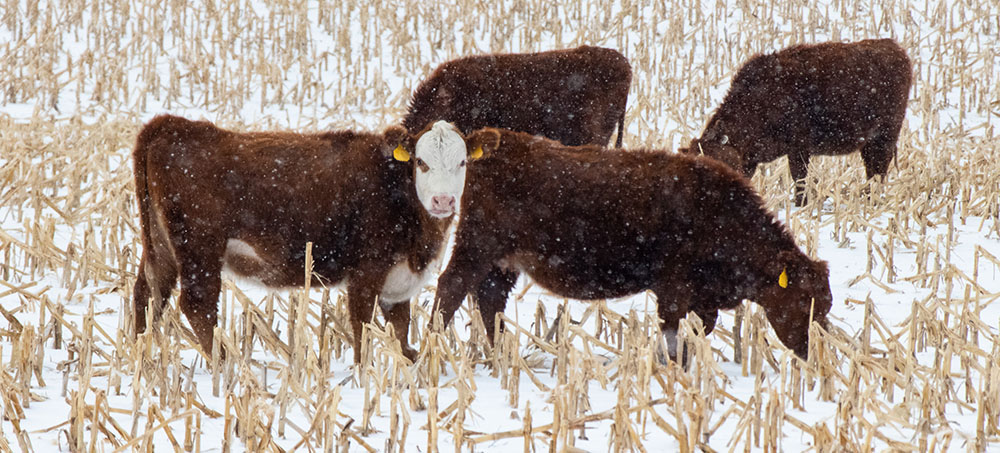
By Harry Brook
Do you feed the same minerals to cattle, year after year? As feed quality and feed supplies vary from year to year, so too the mineral package needs to be adjusted. Using green feed, swath grazing or silage as the primary winter feed requires different mineral packages than a hay, grain and straw winter ration. Also, stage of pregnancy, age, condition and class of cattle will require different minerals. It all starts with testing your feed supply.
The major minerals needed by livestock included calcium, phosphorus, sodium, chloride, potassium, sulfur and magnesium. I’ll deal with micronutrients in a future column. Calcium and phosphorus are essential for bone production. Calcium is also needed for enzymes, hormones and muscle development. And, of course, milk production for the lactating cow. Phosphorus is needed for energy and reproduction, among other processes. Cattle need a calcium to phosphorus ratio of at least 1.5:1 but 2:1 is safer. Imbalances can lead to production or even reproductive issues.
In general, having cereals as the main forage in the ration will require more calcium than phosphorus in the mineral package as cereal feeds have a calcium ratio of 1:1 or less. There is also a need to supplement magnesium as it is in short supply in cereals. Using a 2:1 or 3:1 mineral can make a lot of sense. If there are significant amounts of legumes being fed in a hay, the demand for calcium may be reduced as legumes usually have high levels of calcium. A rule of thumb is that legume or grass legume hay is usually high in calcium. Cereal silage or green feed tends to be higher in phosphorus than calcium. Grains are very high in phosphorus and inadequate in calcium.
Some people may have a mistaken belief that cattle are able to sense the minerals they need and will eat enough of the right minerals to stay healthy. Actually, cattle aren’t that much different than people. They eat what tastes good. A lot of minerals are rather bitter and that makes it difficult to get sufficient minerals into them if you rely on free choice to meet their dietary needs.
Mineral licks or tubs are one way that minerals can be supplemented but it isn’t a great way to do it and it can be very expensive. Using molasses in the tubs makes the minerals more palatable, but you can still have huge variations on individual animal intake. Some may take double or triple the amount they need, while other cattle may hardly touch it.
The one thing cattle will eat is salt. They must have it and it can be mixed in with the mineral to get more mineral uptake in the cattle. This isn’t an easy answer either. If you have high sodium content in the water supply or the feed, there may be little salt intake. However, it can be an effective way to get the minerals into the cattle if there is not too much salt in the water or feed.
There are a lot of different forms of minerals available. Some are chelated and others just in their mineral form. Knowing what the feed contains is the first step in providing adequate minerals to keep your animals healthy and productive this year and into the future. With information from the test you can supplement minerals they need without breaking the bank.
Harry Brook is Flagstaff County’s Agricultural Fieldman. He can be reached via email at: hbrook@flagstaff.ab.ca or by phone at: 780-384-4138.